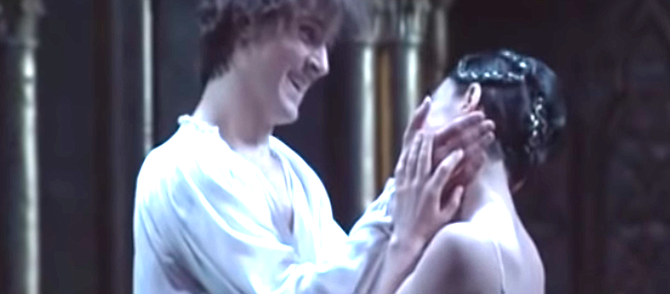 Facebook
Facebook
 X
X
 Instagram
Instagram
 TikTok
TikTok
 Youtube
Youtube

If there is one thing I’ve bemoaned about modern music, all modern music, it’s the lack of melody. From the concert hall to the opera stage to popular music, melody is on the decline.
Within the vast realm of classical music, there are certain melodies that everybody knows. They are legion. Think about it for a moment. How many can you name and hum? We could all do Beethoven’s greatest hits such as the Fifth and Ninth Symphonies, Moonlight Sonata, Fur Elise, the Pathetique Sonata, the second movement of the Seventh Symphony, and on and on we go with just Beethoven.
Mozart has even more. There are scores of famous melodies from Bach and Handel. Tchaikovsky wrote a few memorable tunes as did Edward Elgar. Elgar wrote a little tune we all know as Pomp and Circumstance. The opera Carmen has half a dozen famous melodies on its own.
We all know the most famous melodies but what about some fantastic melodies that are somewhat off the beaten path? Let’s take a look at four melodies that have not found household status.
Prokofiev once said, “I have never doubted the importance of melody. I like melody very much, and I consider it the most important element in music, and I labor many years on the improvement of its quality in my compositions.”
Of all of Prokofiev’s melodies, his “Montagues and Capulets” is probably the most famous due to its inclusion in several commercial endeavors. However, “The Balcony Scene” is resplendent with melody. Tchaikovsky’s Romeo and Juliet might be more famous but Prokofiev’s is ever so much finer.
4. "Zion hört die Wächter singen"
A melody of a similar ilk is the transfiguration theme from Richard Strauss’ Tod und Verklärung (Death and Transfiguration). This tone poem is not Strauss’ most popular so, relatively speaking, not many casual classical music consumers get to experience this melody. Of course, everyone knows the opening theme of Strauss’ Also Sprach Zarathustra.
Hear the fully fleshed-out transfiguration theme starting at the 14:45 mark.
J.S. Bach wrote many a famous tune. We all know *Air on G String, “Jesu Joy of Man’s Desiring, and the Toccata and Fugue in D minor. One of his finest melodies is hidden within the Cantata Wachet Auf. The melody is carried by the strings at the beginning of the fourth section of the cantata entitled, "Zion hört die Wächter singen".
No one wrote a better melody than Giacomo Puccini. Some of the most famous melodies of all time dripped from his pen. There is one, quite short melody, in Madama Butterfly that always astounds me. Prince Yamadori has come, again, to offer himself to Cio Cio San. The character of Yamadori is of little consequence yet the melody with which Cio Cio San sings his name leaves no question as to why he repeatedly wants her to be his bride.


If there is one thing I’ve bemoaned about modern music, all modern music, it’s the lack of melody. From the concert hall to the opera stage to popular music, melody is on the decline.
Within the vast realm of classical music, there are certain melodies that everybody knows. They are legion. Think about it for a moment. How many can you name and hum? We could all do Beethoven’s greatest hits such as the Fifth and Ninth Symphonies, Moonlight Sonata, Fur Elise, the Pathetique Sonata, the second movement of the Seventh Symphony, and on and on we go with just Beethoven.
Mozart has even more. There are scores of famous melodies from Bach and Handel. Tchaikovsky wrote a few memorable tunes as did Edward Elgar. Elgar wrote a little tune we all know as Pomp and Circumstance. The opera Carmen has half a dozen famous melodies on its own.
We all know the most famous melodies but what about some fantastic melodies that are somewhat off the beaten path? Let’s take a look at four melodies that have not found household status.
Prokofiev once said, “I have never doubted the importance of melody. I like melody very much, and I consider it the most important element in music, and I labor many years on the improvement of its quality in my compositions.”
Of all of Prokofiev’s melodies, his “Montagues and Capulets” is probably the most famous due to its inclusion in several commercial endeavors. However, “The Balcony Scene” is resplendent with melody. Tchaikovsky’s Romeo and Juliet might be more famous but Prokofiev’s is ever so much finer.
4. "Zion hört die Wächter singen"
A melody of a similar ilk is the transfiguration theme from Richard Strauss’ Tod und Verklärung (Death and Transfiguration). This tone poem is not Strauss’ most popular so, relatively speaking, not many casual classical music consumers get to experience this melody. Of course, everyone knows the opening theme of Strauss’ Also Sprach Zarathustra.
Hear the fully fleshed-out transfiguration theme starting at the 14:45 mark.
J.S. Bach wrote many a famous tune. We all know *Air on G String, “Jesu Joy of Man’s Desiring, and the Toccata and Fugue in D minor. One of his finest melodies is hidden within the Cantata Wachet Auf. The melody is carried by the strings at the beginning of the fourth section of the cantata entitled, "Zion hört die Wächter singen".
No one wrote a better melody than Giacomo Puccini. Some of the most famous melodies of all time dripped from his pen. There is one, quite short melody, in Madama Butterfly that always astounds me. Prince Yamadori has come, again, to offer himself to Cio Cio San. The character of Yamadori is of little consequence yet the melody with which Cio Cio San sings his name leaves no question as to why he repeatedly wants her to be his bride.
Comments